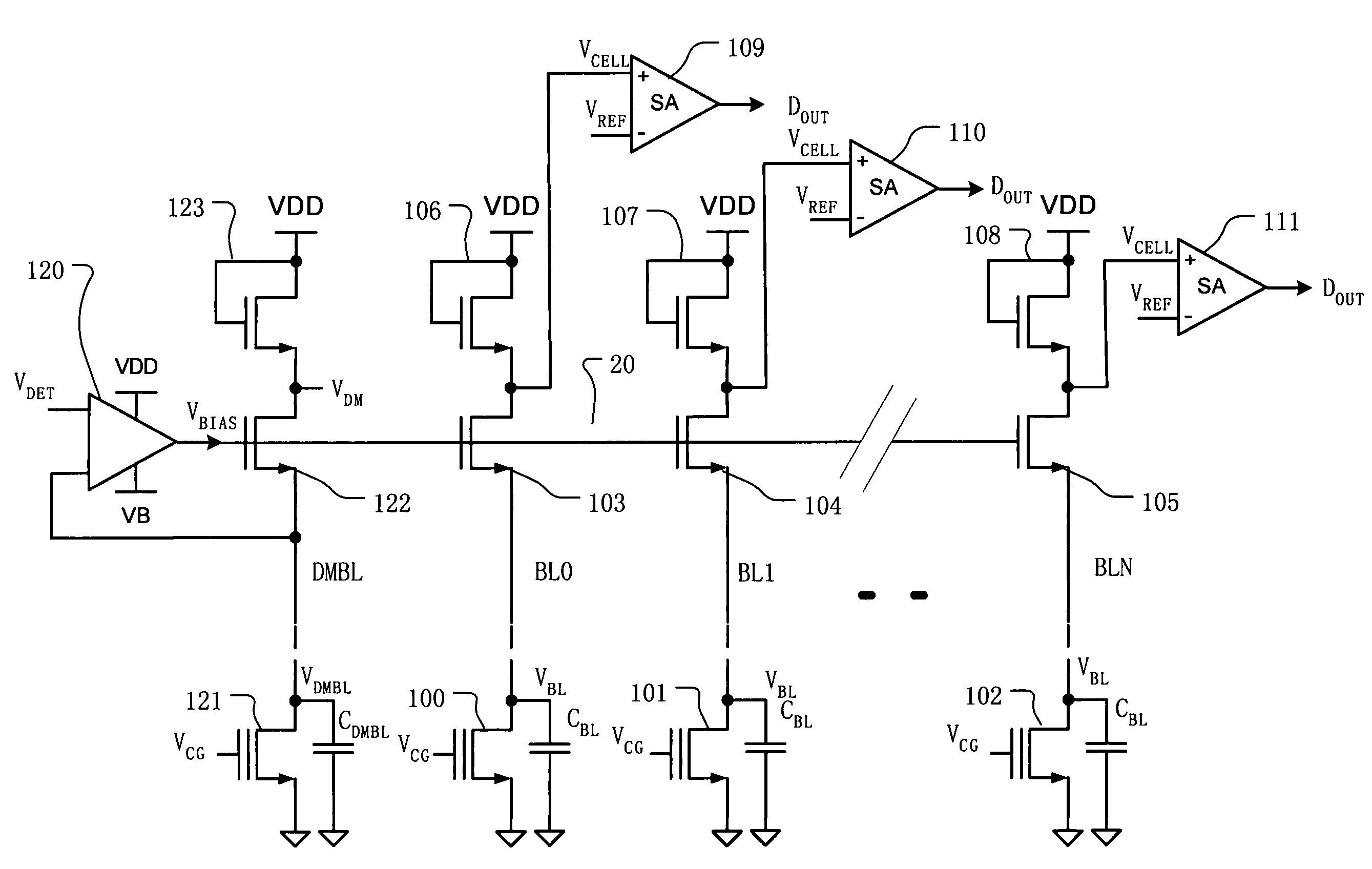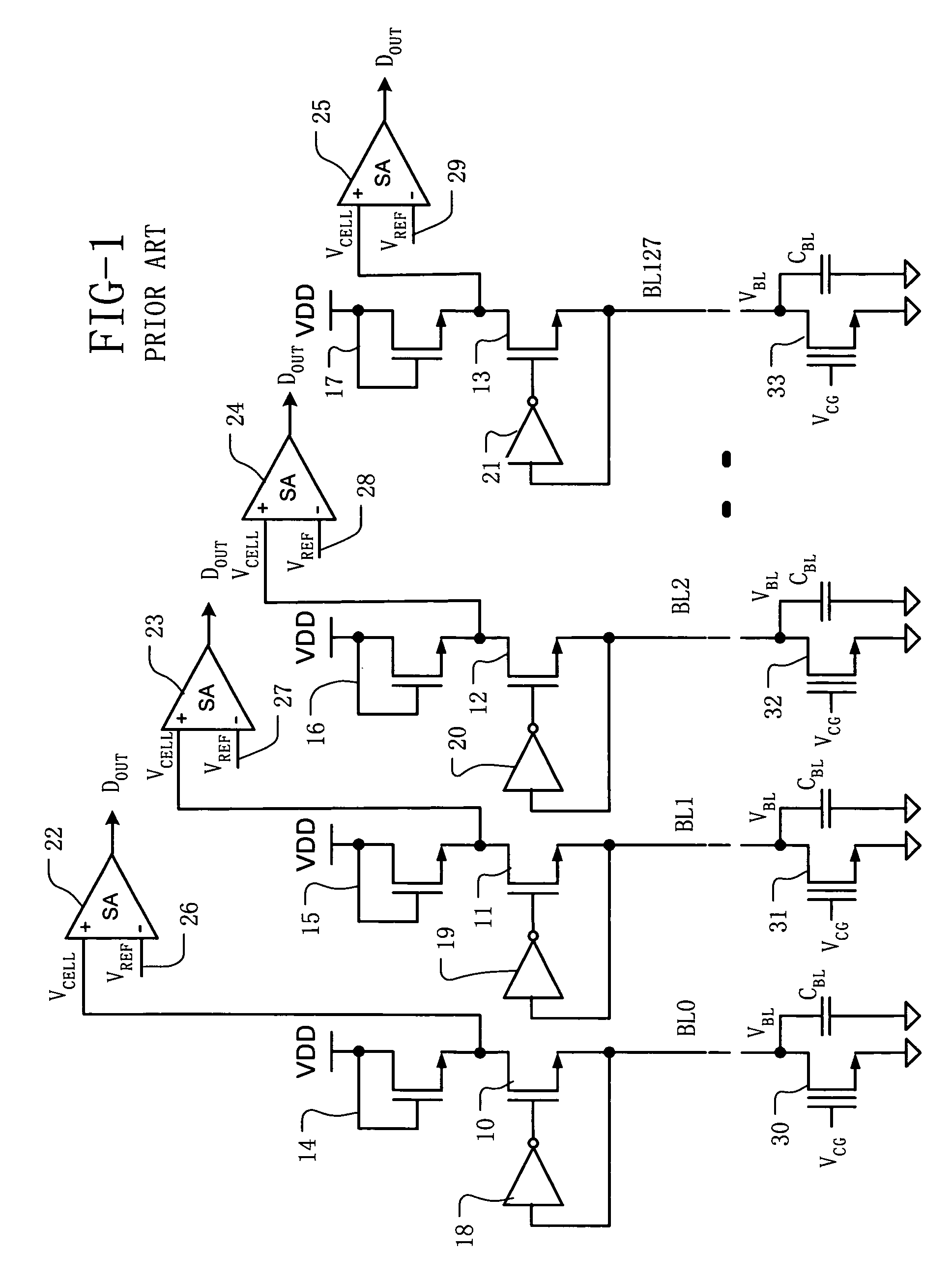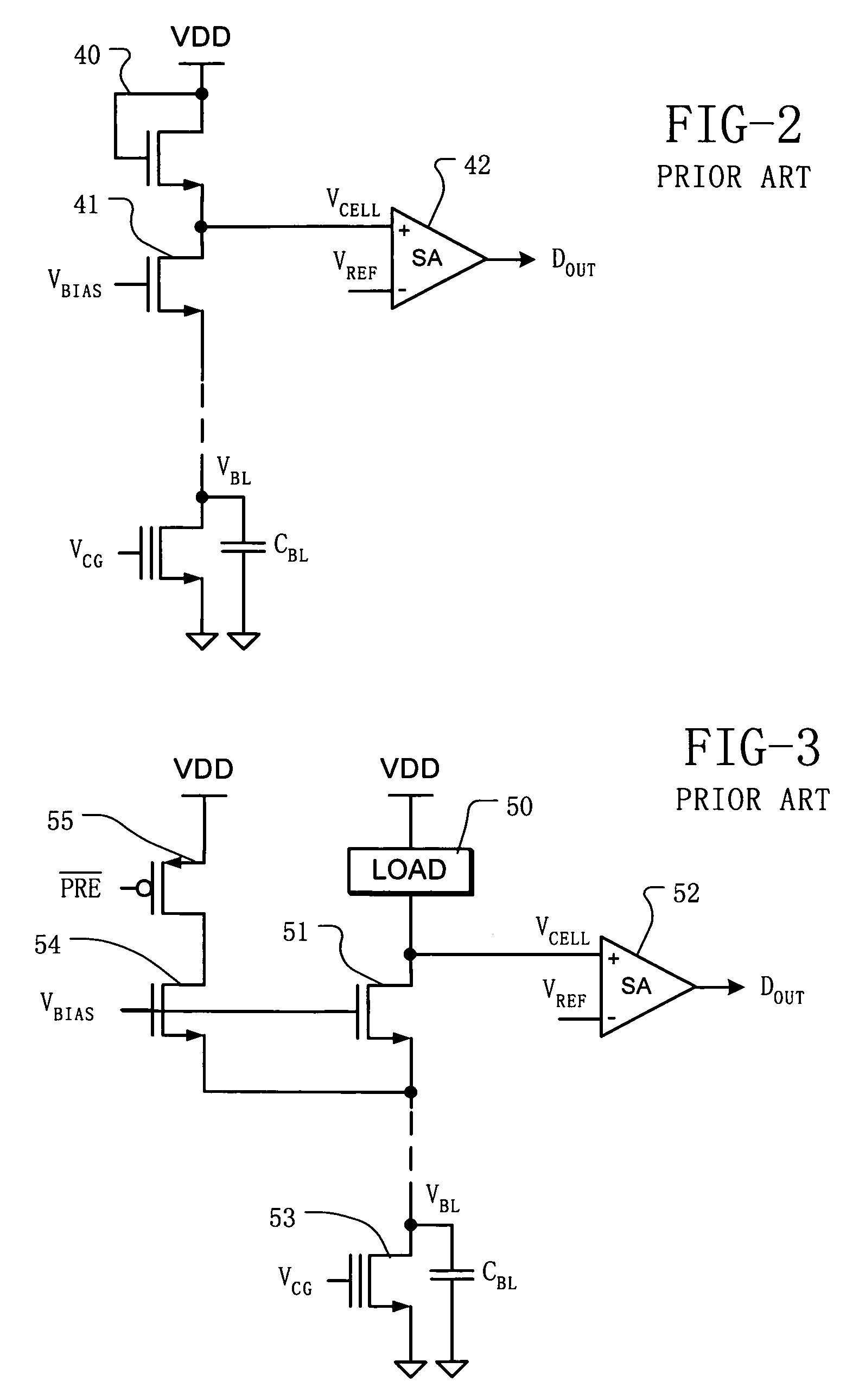Memory array with low power bit line precharge
a memory array and low power bit line technology, applied in the field of integrated circuit memory devices, can solve the problems of limiting the size and speed of memory devices, limiting the speed of such sensing systems, and the requirement of complex biasing structures on every bit line, and limiting the size and cost of integrated circuit memory
- Summary
- Abstract
- Description
- Claims
- Application Information
AI Technical Summary
Benefits of technology
Problems solved by technology
Method used
Image
Examples
Embodiment Construction
[0025]A detailed description of embodiments of the present invention is provided with reference to the FIGS. 4–6.
[0026]FIG. 4 illustrates sensing circuitry including a reference bit line DMBL (dummy bit line) and shared biasing circuitry for high speed and low power precharging. A memory array is represented by memory cells 100–102, found on respective columns in an array of memory cells, and selected for connection to bit lines by decoding circuitry not shown. Capacitor symbols CBL are illustrated, and associated with each of the bit lines. The capacitor symbols CBL represent the total bit line capacitance for access to a selected cell. In the illustrated embodiment, there are N bit lines, labeled BL0, BL1, . . . BLN in the array of memory cells. Clamp transistors 103–105 and load transistors 106–108 are included on respective bit lines BL0–BLN, and arranged identically in the illustrated embodiment. Clamp transistor 103 acts as a clamping circuit on bit line BL0. In this embodimen...
PUM
 Login to View More
Login to View More Abstract
Description
Claims
Application Information
 Login to View More
Login to View More - R&D
- Intellectual Property
- Life Sciences
- Materials
- Tech Scout
- Unparalleled Data Quality
- Higher Quality Content
- 60% Fewer Hallucinations
Browse by: Latest US Patents, China's latest patents, Technical Efficacy Thesaurus, Application Domain, Technology Topic, Popular Technical Reports.
© 2025 PatSnap. All rights reserved.Legal|Privacy policy|Modern Slavery Act Transparency Statement|Sitemap|About US| Contact US: help@patsnap.com



